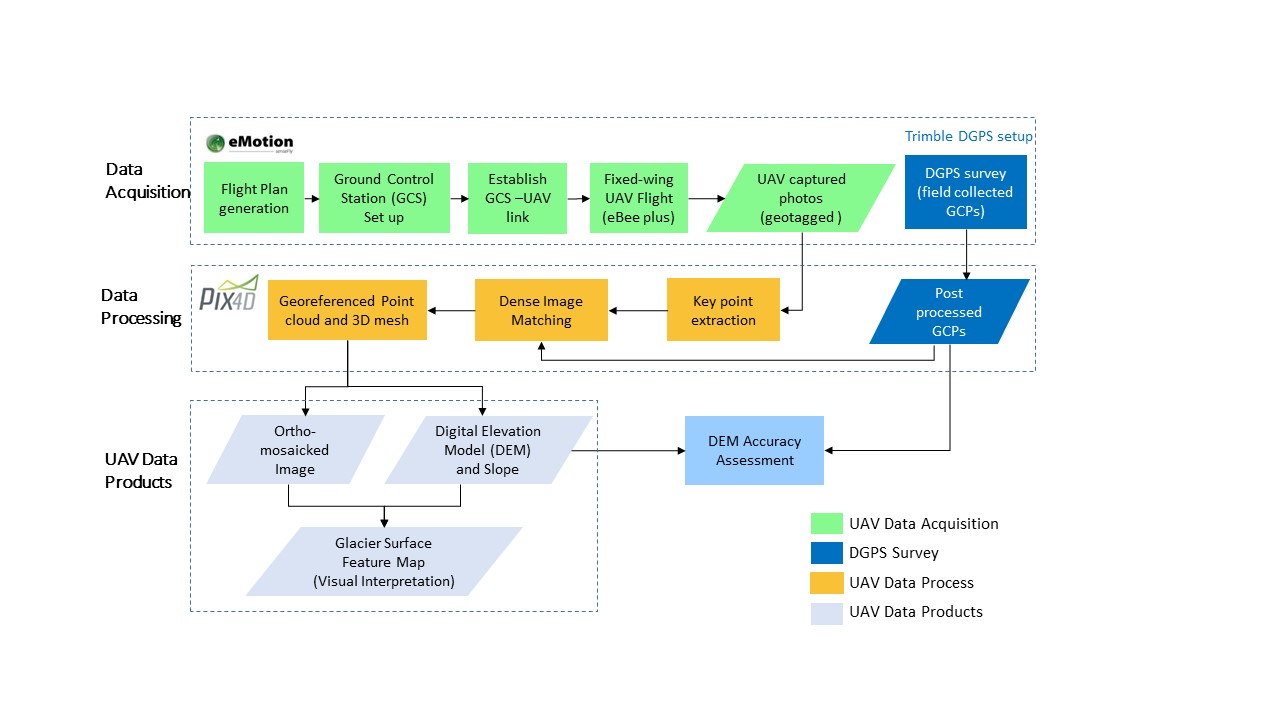Unmanned Aerial Vehicle (UAV) based remote sensing (RS) studies in glaciology are mainly focusing on obtaining accurate high-resolution data from UAV images. Studies for identifying and minimising the challenges faced during the UAV-based RS data acquisition survey on inaccessible and harsh terrains of mountain glaciers is limited. This study aims to examine the practical challenges faced during UAV surveys of glaciers and derive strategies to minimize them. To the authors' knowledge, this is the first study that addresses such problems over the Himalayan region. Here, the UAV surveys were conducted using a fixed-wing commercial-grade off-the-shelf UAV (eBee plus, SenseFly) on three glacier sites (East Rathong, Hamtah and Panchinala-A) located in different zones and climate regimes lying within the Indian part of Himalayas. From UAV collected photos, the study was able to generate ultra-high-resolution ortho-mosaicked images and Digital Elevation Models (DEMs) at 0.1m GSD. UAV-derived DEMs was able to achieve vertical (horizontal) accuracy of 0.45 and 0.21 m (0.15 and 0.1 m) with 3 and 6 ground control points (GCPs) for an area of 0.75 km2 and 1.38 km2. Accuracy assessment of UAV DEMs generated with and without GCPs indicate that GCPs are must to obtain decimetre level accurate DEM especially on glaciers with steep-valleyed terrains. The utility of the obtained ultra-high-resolution ortho-mosaicked images was demonstrated by generating glacier surface feature maps. Based on the challenges observed during UAV surveys, the study identifies and recommends best-suited locations on a glacier and its adjacent regions for conducting UAV surveys efficiently in the glaciated terrain of Himalayas and possibly beyond. Recommendations reported in this article shall minimise the challenges faced and involved risks for data acquisition and thus enable UAVs to cover more glaciated area successfully.

